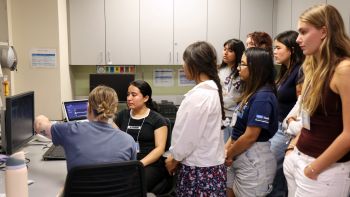How are screen time and social media affecting adolescents’ mental health?
Based on the research to date, there are two answers: “not much” and “it depends.”
A 2014 review of 43 research papers found that most reported mixed results or no effect of social media on adolescent well-being. In fact, 13 of the studies found that social media use increased self-esteem, perceived social support, and social capital.
The harmful effects of social media use included increased social isolation and depression and the possibility of cyberbullying.
Studies on screen time and mental health
More recent studies from the University of Oxford have found “little evidence” of statistically significant negative relationships between screen time and adolescent well-being. The same authors found that the very small negative effect of screen time on adolescent well-being was equivalent to the effect of eating potatoes or wearing glasses (wearing glasses has a slightly greater negative effect).
On the other hand, a recent longitudinal study of more than 6,500 American adolescents found that more than three hours of social media use each day may increase the risk of mental health problems over time.
Different types of screen time
When the use of technology enhances connection, social support, or belonging, the effects are positive. For example, time spent texting appears to be associated with lower average depression symptoms, largely due to the social connection involved. When it’s used as a way to isolate or to compare oneself to others, it may have negative effects. In addition, young people struggling in their offline lives may experience more negative effects or problematic use of technology.
One important factor in the link between technology use and mental health: sleep. If adolescents are online late at night, both the activity and the light can interfere with sleep, which affects mental health.
There’s no easy answer, but it boils down to this: Whether technology has a positive, negative, or neutral effect on an adolescent depends on amount of time, type of activity, and the individual user.
Additional Resources



